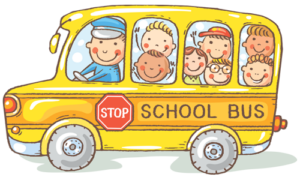
After only four years of operation, the Evanston ecosystem – EvanSTEM – has cultivated a reputation for high-quality, engaging STEM programming, especially within communities of color.
“When parents get an EvanSTEM mailer or email, they know that the program is going to be a fun science challenge and it’s going to be local,” says Callam of the community’s awareness of the ecosystem. “They also know the program will be well attended, if not 100%, by students of color. Families know this and are much more comfortable.”
Evanston is a close-knit community with a population of about 80,000 people; and the citywide ecosystem is working to ensure that all families know about learning opportunities and have the ability to participate.
Connecting with families online and offline
In the Evanston ecosystem, schools and program providers take every occasion to connect with families. Using both technology and in-person meetings, families are given information about important learning opportunities as well as resources to prepare them for the next stage in a child’s trajectory.
Managed by the Evanston School District, the EvanSTEM online student data platform aims to get families engaged and invested in their students’ progress. The hope is that this level of engagement becomes part of a regular regimen for youth and parents when seeking learning opportunities online or in the community.
“Parents can log into this citywide data system to better understand programs available for a specific pathway their child might have an interest in,” says Callam. “As the one place that parents are going to for program information, providers in the city want to be involved, which helps drive larger ecosystem engagement. Now we are working with programs to help them expand the reach of the types of students they are serving to make opportunities more accessible for all.”
Making programs more accessible
EvanSTEM leadership keeps equity and access as a central part of their work. The team supports providers to broaden their reach by helping them eliminate barriers for families that they never realized existed.
Barriers include everything from the location of a program to access to regular wifi or email. In order to advertise on the platform, organizations must offer day-of registration for their programs to give access to families that might not use email or have regular access to wifi. Providers hold a number of spots for the families that register in person.

“Location matters too,” says Callam in listing the ways EvanSTEM works to expand access. “Some organizations would love to serve more students of color, but they are hosting their program in a place where families don’t feel comfortable going or can’t make it because it is too far away. We help them secure new spaces in locations that are more accessible and familiar to families they haven’t been able to serve before. It has completely changed the dynamic.”
Being smart about marketing and engagement opportunities
EvanSTEM leads various marketing campaigns and the ecosystem’s work is also grounded in a school district-led data system that better connects student work.
Families are asked for feedback during pick-up and drop-off times, through surveys, via phone and email and during larger events. EvanSTEM partners work to make it as easy as possible for families to provide their input.
Preparing families for the pathways ahead
EvanSTEM has also created a cohesive system of afterschool programming to provide support for underserved students from kindergarten to high school.
EvanSTEM’s Director, Kirby Callam, describes the ecosystem’s tiered programming, including STEAM Saturday workshops. The workshops are run by a number of varied STEM program providers to engage underrepresented youth in powerful engineering and making experiences to build STEM identities toward academic success and career pathways.

Workshops also include lunch for families to attend during the last 30 minutes so that students can showcase their learning and parents can connect with mentors and learn what’s next in their child’s learning trajectory.
Case management sessions are also offered to aid families in the transitions from elementary to middle and middle to high school. “Middle school students are at the age where they don’t want to sit and eat lunch with their parents,” says Callam. “We want to protect the space for those students, therefore, the program providers and schools communicate with families in other ways like email and printed flyers (both mailed and sent home with students).”
Strong criteria for rigorous and fun programming
The rigor, fun and diversity of programs also drives tremendous interest.
“We can mandate the types of programs we support so that the learning experience is never recipe based,” says Callam. “We have criteria that ensures programs are broad in reach, fun, with engaging hands-on experiences and include food. During our first year the response was merely a trickle, but now we are well-known. There’s no magic necessarily, it’s just being clear on the types of experiences we want students and families to have and working on it over time.”
Key Take-Aways
- Building your reputation takes time, but with time and a vision for success it pays off.
- Take all opportunities to engage families. Use program pick-up and drop-off times as ways to chat with parents and offer resources.
- Location matters, especially when considering access for all families. Ensure your programs are offered at easy to reach locations that are both familiar and culturally responsive.
EvanSTEM seeks to improve access and engagement for students who have traditionally underperformed or have been underrepresented in STEM programs.
EvanSTEM GOALS
NETWORK: Aligned K-12 STEM pathways across schools, out-of-school programs, and districts
YOUTH: Improved STEM access and engagement for Evanston students who are underperforming or underrepresented in STEM programs
EDUCATORS: Increased professional capacity of STEM educators
Cross-Cutting Professional Development
Development and Piloting of STEM Learning Experiences

